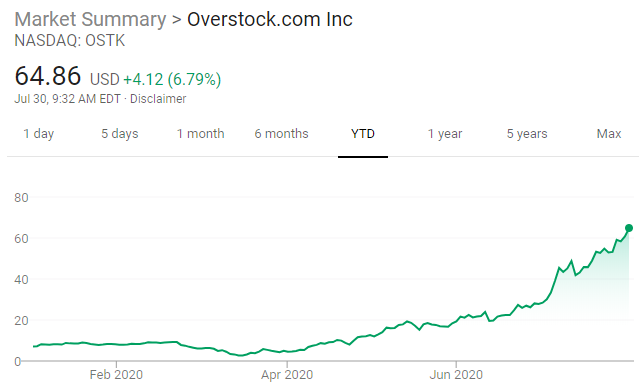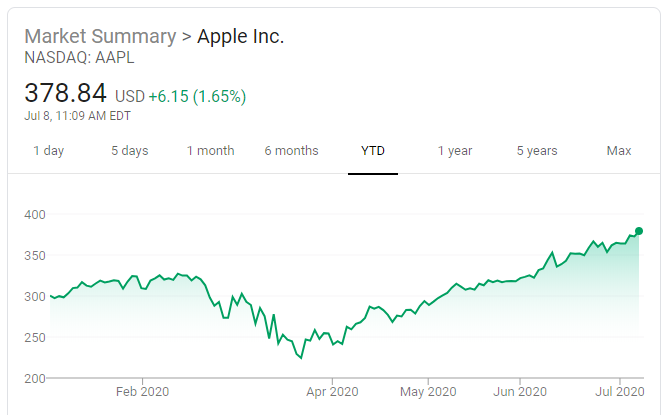During every recession trophy assets go on sale in the equity market but sometimes aren’t noticed because most everything looks cheap and the headlines are so ugly. Commercial real estate has served investors well for decades but the pandemic is putting landlords on shaky ground in the near-term as rent collection percentages sink from the high 90’s rate we are used to seeing.
I have long favored investing in real estate by way of the public markets and while these holdings are not doing well right now, I firmly believe the asset class will regain its dominance in time and that certain assets that I did not own coming into 2020 can be had now at amazing prices. I am focusing on office space in prime markets like New York these days, as the media would have you believe that the corporate office will never be the same again and working from home is the new normal. The stock prices are indicating a similar narrative, with share prices down 40-50% from 52-week highs.
Let’s not get too carried away. In fact, there are already signs that my longer term thesis (that workers will largely return to the office, though there will be more flexibility to work from home occasionally) is likely to come to fruition. For instance, on Monday Vornado (VNO) announced that they leased 730,000 square feet of office space to Facebook in New York City. While the press is reporting that tech companies are leading the path toward letting employees work from home well into 2021, they clearly have every intention of bringing people back when it is safe to do so. If you are investing based on the narrative that people are fleeing cities for the burbs (because if offices are not downtown, why be there?) and that the tech sector is going to lead this shift because software engineers can work from anywhere, please ask yourself why Facebook is leading this much space in the middle of NYC.
Even though we are really only in the early innings of the working from home movement, there are already business leaders who are questioning whether they can maintain the same levels of productivity, training, and problem solving when teams are scattered across a city or state. A recent Wall Street Journal article entitled Companies Start to Think Remote Work Isn’t So Great After All framed the issues wonderfully. Below are some excerpts:
“Four months ago, employees at many U.S. companies went home and did something incredible: They got their work done, seemingly without missing a beat. Executives were amazed at how well their workers performed remotely, even while juggling child care and the distractions of home….. No CEO should be surprised that the early productivity gains companies witnessed as remote work took hold have peaked and leveled off….. because workers left offices in March armed with laptops and a sense of doom. It was people being terrified of losing their jobs, and that fear-driven productivity is not sustainable…”
“In San Francisco, startup Chef Robotics recently missed a key product deadline by a month, hampered by the challenges of integrating and testing software and hardware with its engineers scattered across the Bay Area. Pre-pandemic, they all collaborated in one space. Problems that took an hour to solve in the office stretched out for a day when workers were remote, said Chief Executive Rajat Bhageria.”
“Projects take longer. Training is tougher. Hiring and integrating new employees, more complicated. Some employers say their workers appear less connected and bosses fear that younger professionals aren’t developing at the same rate as they would in offices, sitting next to colleagues and absorbing how they do their jobs.”
Perhaps my favorite part of the article was a discussion with the CEO of a company called OpenExchange, which has seen plenty of efficiency problems with remote work:
“Workers on the company’s European team said they could benefit from some in-person interaction during this time of huge growth at the company. So in late July, OpenExchange is renting a house in the English countryside, with about 15 bedrooms, so many of its employees can live and work together, while still distancing. It’s important to have people in a room and see body language and read signals that don’t come through a screen, says the CEO.”
The irony? OpenExchange is a “Boston-based video technology firm which helps run large, online conferencing events.” If a tech firm that build products for remote work is struggling with it, and a company like Facebook (where most employees sit in front of a screen all day) is leasing more office space in New York during the pandemic, maybe the office as we knew it a few months ago isn’t dead.
A rational counterargument to this thesis is that even if, say, 25% of employees work from home post-pandemic (compared with about 15% prior to it) there will need less demand for office space and rents for existing buildings will fall materially. Maybe this is why landlord stocks are down 40-50%. I think this view is overly simplistic.
An ever-expanding economy means that employee counts are almost always growing, which is why new office space is regularly built. Therefore, I would expect that any modest decline in office demand is going to show up first in reduced construction of new buildings, not the abandonment of existing ones.
Consider that maybe a company grows its employee base by 10% over the next 3 years but can get away with using the same office space it currently leases due to more remote work in the future. In that case, existing leases are still going to be renewed. Without a lot of vacancy, rents should be stable. In fact, if new construction really does drop meaningfully, it could actually put upward pressure on rents for existing space, a phenomenon we have seen a lot in recent years in the residential housing market, where in many markets fresh plots of land and skilled labor are in short supply.
The bottom line for me is that it is rare for premier commercial real estate in gateway cities across the country to be quoted on the public market for a deep discount and I think 2020 is one of those times. Fortunately, regular folks can get in on the action via the U.S. stock market rather than needing to buy up properties themselves, which is obviously not financially feasible in most cases.






